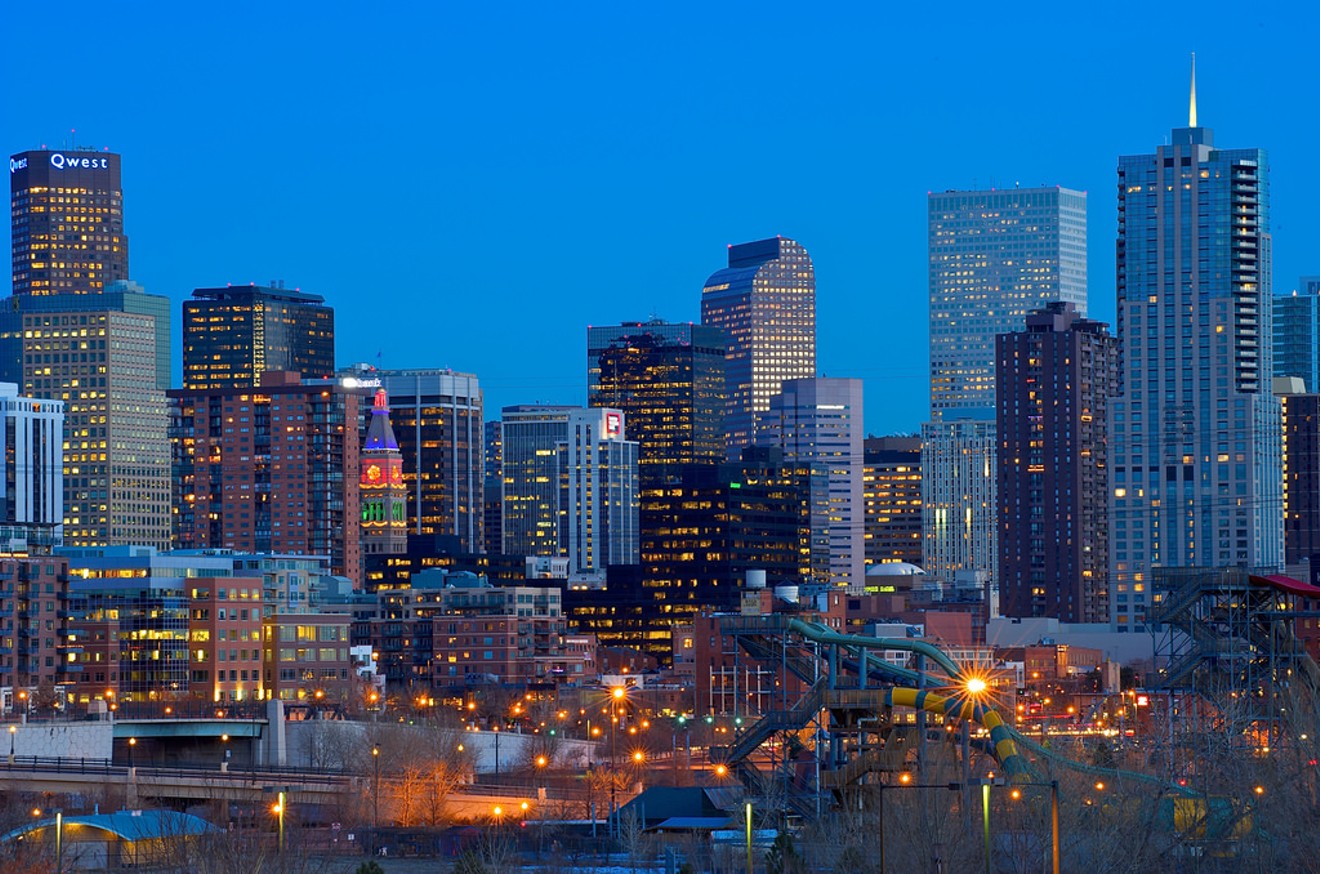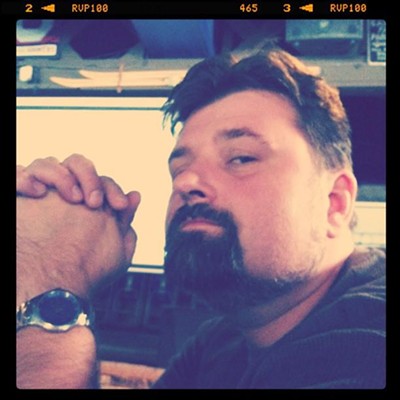This week, while the turkey is cooking and the fireplace is crackling and no one is considering skipping the pie, let's take time to reflect on the watersheds in Denver’s history that brought about this great city. Here are some suggestions for you to contemplate:
1. The “City Beautiful” Movement
If you’ve ever enjoyed Denver’s parks, its sandstone sidewalks or the lights on some of the older buildings downtown, then you have Mayor Walter Speer and his “City Beautiful” movement to thank. Speer — yes, the same guy for whom our cross-cut boulevard was named — realized that Denver was booming but still pretty unattractive around the turn of the nineteenth century. So he launched a movement that included adding street lamps and storm drains and sewer systems and — no kidding — an official sanction of public displays of affection in city parks, which the Rocky Mountain News reported might just help increase Denver’s population. No word if that made a difference…but Speer’s influence is blessedly apparent in every corner of the city.

Where all the demographically fair action happens.
Ken Lund at Flickr
This is a lot more recent — like earlier-this-month recent — but the passage of Amendments Y & Z to the Colorado Constitution marks a major sea change in the way congressional districts are drawn in the state. Politics aside, any fair-minded voter can agree that gerrymandering is unfair and counter to the idea of democratic representation. Amendments Y & Z are a huge step toward changing that on a state level, and yet another way in which Colorado is leading the nation in changing things for the better.

A brick ordinance changed the face of Denver.
Jeffrey Beall at Flickr
It’s not the fire for which Denver can be thankful, of course — the city suffered major losses from that conflagration, which began in the early-morning hours of April 19, 1863, somewhere in or near the back of the Cherokee House Saloon at 15th and Blake streets. By the time the fire was out, over seventy buildings downtown had been destroyed, doing around $300,000 worth of damage in 1863 money — millions today. Because so many of the buildings had wood frames, the city responded to the fire by enacting a brick ordinance,
which required that new builds be constructed primarily of brick or stone. This, in turn, brought about an upturn in masonry arts, brick production, gorgeous brick bungalows, Denver squares and several-story buildings downtown, all still standing after a century or more.
4. The Slow Blue Wave
Over the plast couple of decades, politics in Colorado in general has run from red (the majority of the state voted for Bob Dole in 1996 and George W. Bush twice) to a lovely purple (which matched our mountains' majesty, so that worked out) to all of a sudden finding itself pretty blue as of Election Day earlier this month. That marks a relatively huge shift — but why is it something for which we should be thankful? Because it’s the policies (pot) and candidates (Jared Polis) that the more liberal have supported that have marked the state as being “cool,” according to the Late Late Show's James Cordon, and that means a bigger and more pronounced national reputation. And that, in turn, means more tourism dollars, a better environment to attract students to come for college, companies to open up shop — you know, the stuff that makes economies thrive.
5. The SCFD
The Scientific and Cultural Facilities District is celebrating its thirtieth anniversary this month. Since 1989, the SCFD has collected one-tenth of a 1 percent sales-and-use tax to support cultural programs and institutions throughout the seven-county Denver metro area. Science and the arts are incredibly important to the human experience, and without the passage and re-confirming of this local tax, we’d be a lot less educated, far less entertained and significantly less enlightened. Here’s to Denver voters for affirming the importance of the SCFD over and over again — and here’s to many more years of the SCFD.

Whoa, Nelly.
Mike Sinko at Flickr
Speaking of bringing culture to Denver, an executive order from Mayor Federico Peña established the city’s Public Art Program in 1988, and his successor, Wellington Webb, enacted it. Whether or not you’re a fan of the stack of glowing kidneys called "National Velvet," the giant dancing people in front of the DCPA or Blucifer himself — scaring every Denver visitor witless with his piercing orange glare — you have to admit that they’re part of the fabric of the city. Denver loves to love some of its art, and it loves to hate some of its art, and that’s sort of the point. We talk about it. We remember it. It becomes who we are. And that deserves a salute.
7. All the Pot
Pot has arguably become more important to Denver tourism than the ski industry. It’s part of what we're known for around the world. And here’s the thing: It’s working. None of the promised issues have materialized. On the contrary, other states are following Colorado’s lead, and it seems like we're heading toward a national policy that Colorado will be given credit for pioneering. Whether or not you partake and whether or not you think it’s good for you, you have to admit that pot has been good for Colorado.

Red Rocks, home of fabulous views and $9 vodka lemonades.
Jessica Sheridan at Flickr
It’s everyone’s favorite Colorado venue, and with good reason: Red Rocks is awesome in the truest sense of the word. It is a place that inspires awe. It’s majestic, and it’s hosted some of the most brilliant musicians that America (and the world) has to offer. The Works Progress Administration and Civilian Conservation Corps may have helped to construct it from 1936 to 1941, but it had been in use as an amphitheater and performing space since 1906. It’s been one of the best places in and around Denver ever since.
9. Turning Down the Olympics
In 1972, Colorado voters overwhelmingly defeated a $5 million bond meant to help support the very expensive 1976 Winter Olympic games. Experts agree that even the $5 million wouldn’t have been enough to actually pay for the bill Colorado would see. The Games eventually went to Innsbruck, Austria, where they’d been held back in 1964. Had the Games happened here, they would have changed the face of the city and state — not to mention, Colorado would never have enjoyed the maverick status it's had since looking the U.S. Olympic Committee in the eye and saying “No, thanks.” Will history repeat itself?
10. The Denver Pacific Railway
One of the earliest moments in Denver history is also arguably the most important. If boosters hadn’t tirelessly worked to establish a railroad spur between Denver and the transcontinental railway system here in the 1870s, the Mile High City wouldn't have become the Queen City of the Plains…and the other moments on this list likely would not have happened.
















